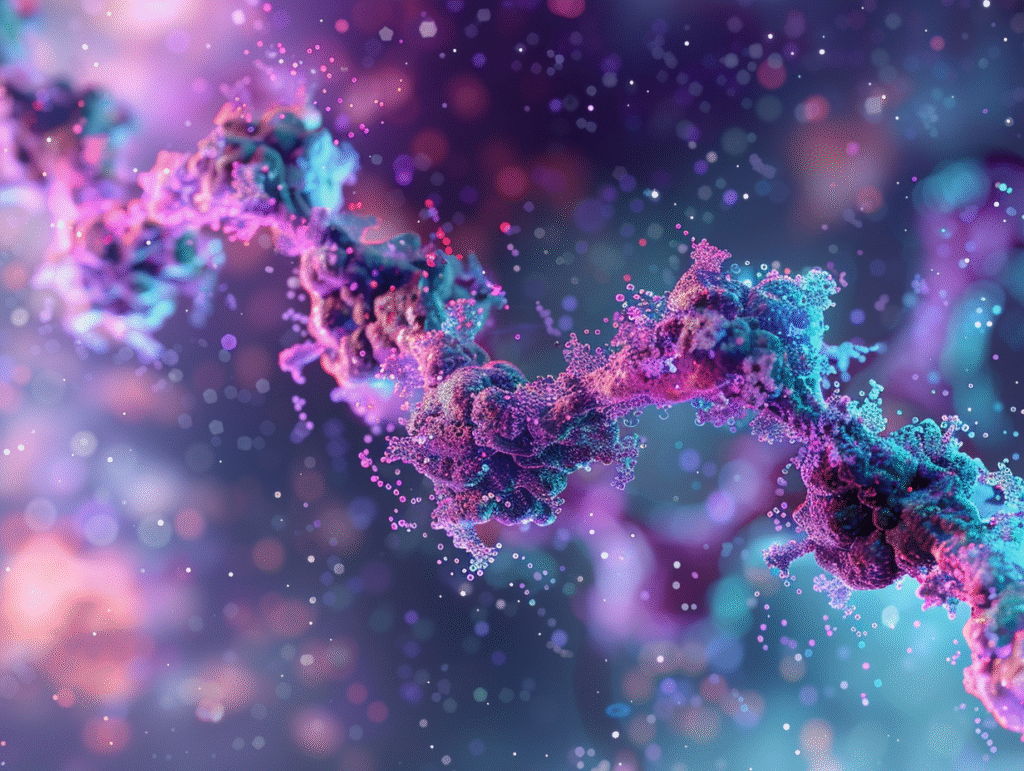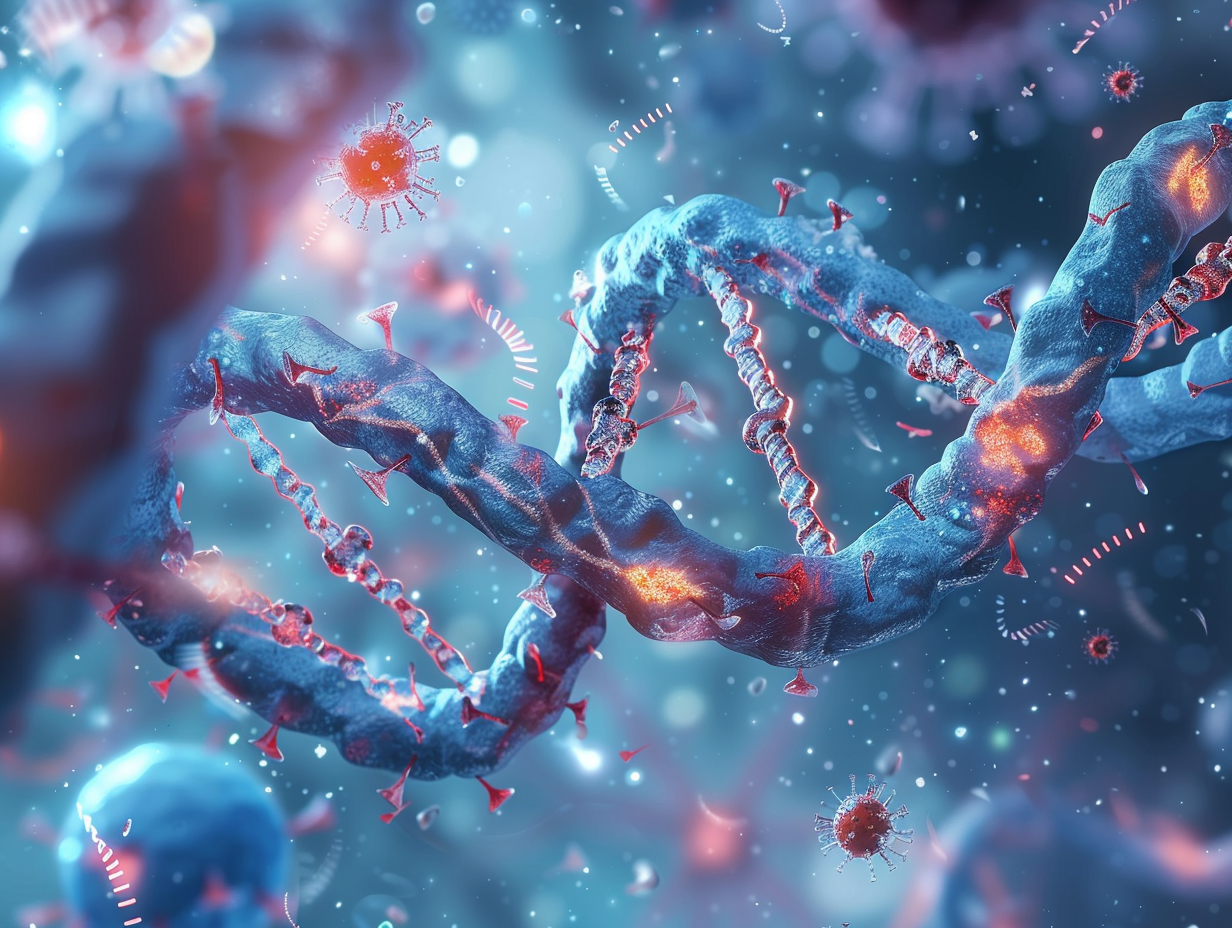The trace of the ancient viral infections lies within our DNA and remains there. Roughly eight percent of the human genome is comprised of sequences of human endogenous retroviruses (HERVs) remnants of historic viruses that assaulted our ancestors millions of years ago.
The majority of these viral fragments are inactive and broken, although one of the families HERV K (HML-2) is abnormally active. It is still capable of expressing its proteins, and their presence has been associated with a variety of diseases such as cancers, autoimmune diseases, and neurodegenerative diseases such as ALS.
There was until a short while no structural information of these viral proteins in any finer detail, and our understanding of the functioning of these proteins, and the ways in which they can be directed, was limited. This has now been altered by an innovative study in 2025 in Science Advances. With cryo electron microscopy (cryo EM) researchers obtained high resolution structures of the HERV K envelope (Env) protein both in the prefusion and postfusion forms.
This work is a breakthrough in the field of virology and structural biology. Through the resolution of the structures of HERV K Env, the scientists have established a roadmap to the use of HERV K Env to comprehend the role of the virus in disease and to use it in therapy.
The finding offers a structural roadmap on which to investigate how HERV K helps cause disease and how it can be used against cancers and autoimmune diseases.

What Is HERV K and Why?
The last and biologically active endogenous retroviruses family is HERV K. In contrast to the majority of HERV sequences, which are highly mutated, a number of HERV K insertions have intact genes to encode viral proteins.
Of great importance is the envelope (Env) protein. Silenced in normal cells, it is abnormally expressed in:
Breast, ovarian, prostate, melanoma and leukemia cancers.
Autoimmune diseases such as rheumatoid arthritis, lupus and type 1 diabetes.
Neurodegenerative diseases such as ALS where it plays a part in the destruction of neurons.
Env is a good therapeutic target since it is expressed on diseased cells but not on healthy cells. Studies have already shown:
Env antibodies are able to inhibit tumor growth.
Mice with metastasis treated by CAR-T cells engineered to attack Env are cured.
Env vaccines can elicit the immune system to reject tumors.
Nevertheless, the researchers had to comprehend the exact structure of the Env protein which was a challenge that has just been overcome to design precise therapies.
The Cryo EM Breakthrough
The research team used the methods of advanced protein stabilization and imaging to reconstruct Env in both its pretension (before cell entry) and postfusion (after membrane fusion) states.
Prefusion Env
The protein is an inverted tripod shaped trimeric complex (117 A tall, 83 A wide).
It consists of 5 subunits: the surface (SU) protein which is receptor binding and the transmembrane (TM) protein which causes membrane fusion.
The SU showed an unknown fold, unlike HIV and other retroviruses. This peculiarity is perhaps the reason why the immune system occasionally treats HERV K differently.
Postfusion Env
In this condition, the TM subunit now re folds into a six-helix bundle, a feature of viral fusion proteins.
Uniquely, HERV K also has a “tether helix” (structural feature absent in HIV but present in other retroviruses).
It is possible that this tether will provide HERV K with some extra maneuverability in the fusion process.
The use of antibodies as Research and Therapeutic Agents.
The group also constructed a collection of monoclonal antibodies (mAbs) with conformation and subunit specific recognition. These are not only mighty in science, but in medicine:
Kenv-6 selectively binds the prefusion Env and researchers can identify native Env expression in diseases.
Kenv-4 identifies the postfusion Env, and it is important in mapping the structural transition.
A number of antibodies have been able to stain immune cells of patients with autoimmune diseases such as lupus and rheumatoid arthritis, but not of healthy donors- indicating their diagnostic value.
These antibodies may be the foundation of new immunodulators, diagnostics, or antibody-drug conjugates against cells expressing the Env.
Human Health Implications.
The structural information about HERV K Env has far reaching consequences:
Cancer Therapy: Env expression in tumors renders it an immunoantigen called neoantigen that can be safely targeted by such immunotherapies as CAR-T cells or antibody drug conjugates.
Autoimmunity: Expressing env in disease, such as lupus, may be a source of inflammation; inhibition would decrease disease severity.
Neurodegeneration: Env in ALS is neurotoxic but antibodies capable of neutralizing Env can protect the neurons.
Diagnostics: Antibodies and structural knowledge are the lead to the discovery of Env in patient samples, which contributes to stratification of the risk of the disease.
A Window Into Evolution
These discoveries provide some interesting facts about the evolution of viruses other than medicine.
Superficial similarities between HERV K Env and HIV are structurally different, and indicate millions of years of separation.
The conservation among human genomes implies its functional significance, and potentially functions in normal biology that are yet to be discovered.
The medium size of the glycan shell (fewer molecules than HIV) indicates HERV K Env is more vulnerable and accessible to antibodies an evolutionary indicator and a therapeutic prospect.
Conclusion
The so called junk DNA is now turning out to be a central contributor to the health and disease of the human being. Cryo EM, monoclonal antibodies, and current immunotherapy all have the potential to turn HERV K into a potent therapeutic target, as opposed to a vulture of the genome.
Reference
Shek J, Sun C, Wilson EM, et al. Human endogenous retrovirus K (HERV K) envelope structures in pre and postfusion by cryo EM. Science Advances. 2025;11(35):eady8168.

